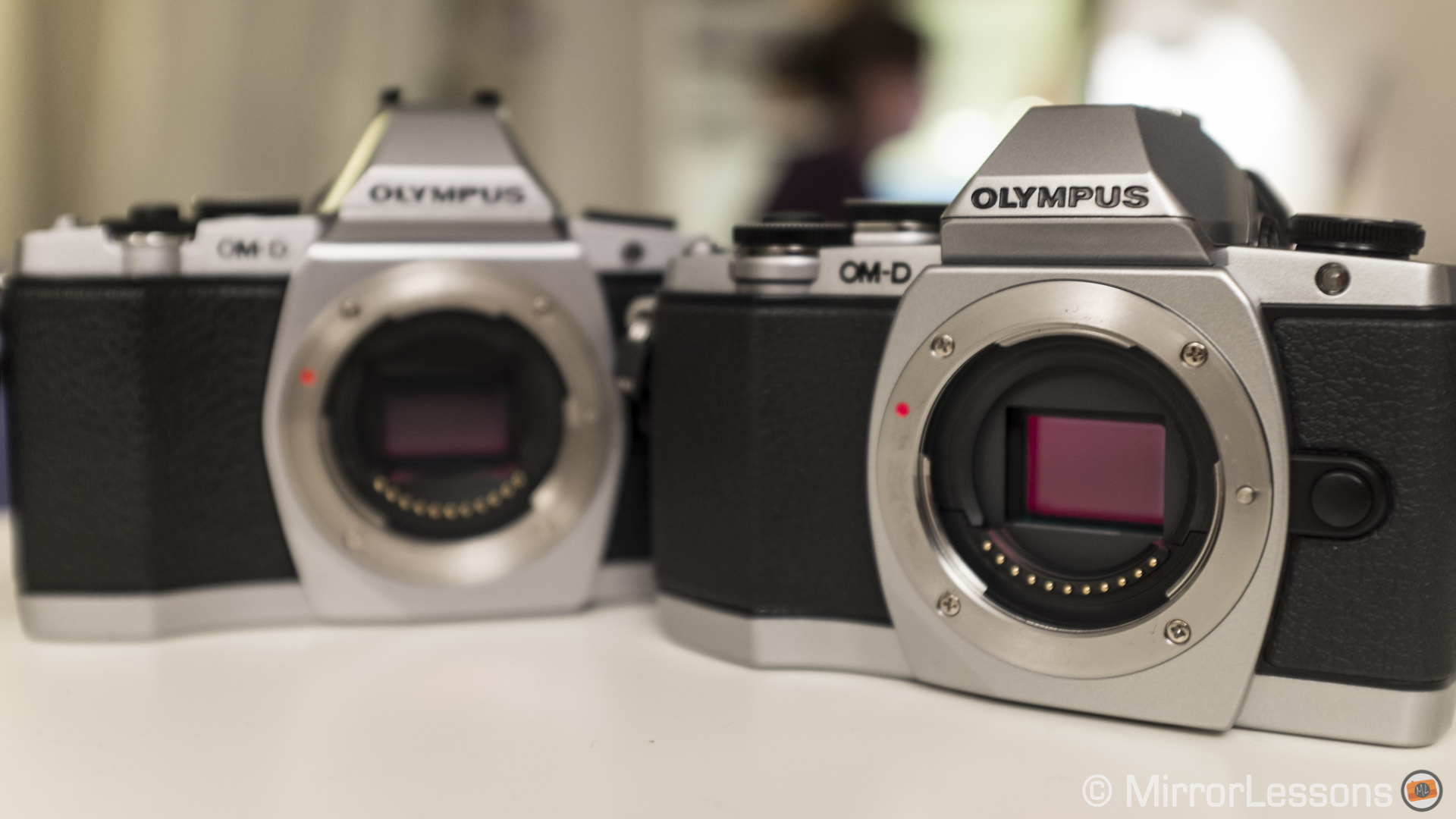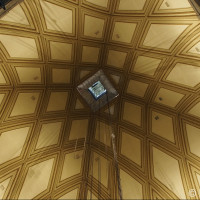Be sure to check out our first impressions of the OM-D E-M10, the 25mm f/1.8 and the 14-42mm pancake!
The Olympus OM-D E-M10 is an exciting new camera that will join the OM-D line-up. The more I use it, the more I prefer it to the E-M5, mostly because of its high speed EVF and fast processor, which makes the camera’s operations run all the more quickly and smoothly. This said, the OM-D E-M5 still has some things going for it…one being the great 5 axis stabilisation.
As a fan of 5-axis stabilisation, I was curious to put it to test against the new E-M10 stabilisation which only has three axes. The million dollar question is: can two missing axes really make a big difference when shooting at slow shutter speeds?
3-Axis vs. 5-Axis for Stills
As I’ve said many times, I’ve had no problem taking hand-held shots at 1 second of exposure time using the 5-axis stabilisation of the OM-D cameras. With the OM-D E-M1, I’ve even managed to obtain sharp images with shutter speeds slower than 1 second. For this reason, I consider the OM-D (and Pen E-P5) stabilisation not only unique amongst stabilisation mechanisms, but also very interesting for low-light situations where there isn’t much action involved.

First, let’s talk specs. Unlike the other OM-D cameras, the new OM-D E-M10 lacks the vertical and horizontal shifts axes. Olympus told me that this choice was made for three reasons: first, and most importantly, because the camera is too small to house 5 axis stabilisation. Secondly, they claim that only real difference between the two IS mechanisms can be seen in macro shots. Finally, since the camera has been designed for amateurs, they believe that the presence of 3 axes instead of 5 won’t be a concern for the users of this camera. During the first days of testing, I did sense that the E-M10 was more sensitive at slow shutter speeds than the E-M5.
I performed a series of tests with the same lens and settings, shooting the same frame with both cameras. I took 4 different photos at 1/10s, 1/5s, 1/2s and 1 second.
The first series was taken with the M.Zuiko 12mm f/2 lens. I was sitting in one of the red chairs that fill the Temple Hall in the Turin National Cinema Museum, pointing the camera up towards the dome.
N.B.: since the E-M10 raw files aren’t supported by Lightroom yet, all the images below are all OOC JPGs.
The four pictures shot with the E-M5 came out razor sharp on the first try, even at 1 second of exposure. Nothing surprising for me. Usually at 1 second I do need to make a few attempts before obtaining the optimal result, but in this case, being sat in a chair was certainly of help.
(100% Crops)
With the E-M10, the results are different starting from 0.5s. The sample above is sharp, but I achieved that result after four attempts. As for the 1 second exposure, the one I posted is the best result I got but it is slightly blurry. It is the best I got out of 6 different attempts.
(100% Crops)
For the second test, I changed the lens and mounted the new M.Zuiko 25mm f/1.8. I wanted to see how much I could push the E-M10 with a longer focal length.
The E-M5 handles the 25mm well on the first attempt down to 1/5s. At 0.4s, I got the sharpest result on the fourth attempt. The other ones were slightly blurry. At 1 second, the best result was achieved with the fourth out of a total of six shots.
(100% Crops)
As for the E-M10, I has some trouble from the shutter speed of 1/10s and slower. The first came out slightly blurry, the second was okay.
Of course, it is important to keep in mind that the fact you achieved the best result on the second (or third or fourth!) attempt isn’t necessarily a weakness of the camera. As good as internal stabilisation can be, the results may vary depending on how still you stand or sit between one shot and another.
At 1/5s on the E-M10, I had to lean against a railing in order to achieve the same result as the E-M5. Before changing positions, I tried different shots in burst mode as well, but none came out as sharp as the E-M5 version. The best result I got was the third picture out of a total of 16 photos taken. Three other pictures had a pretty similar result but it was when I changed positions that I got the best results.
At 0.4s, I didn’t achieve a perfectly sharp result either, and at 1 second I quickly understood that there wasn’t a comfortable position on this earth that was going to help!
(100% Crops)
The important thing to note here is that, except for some very slow shots taken with the 25mm, you really need to see the picture at 100% of its size to notice the differences. To me, that is a sign that the 3 axis stabilisation of the OM-D E-M10 is very effective.
90% of the time, you won’t shoot slower than 1/20 or 1/10 anyway. If you go below, it is at least useful to know the limits of the camera.
Below are two additional examples taken with the 12mm. In this case, I must say the two cameras behaved very similarly, with the exception of the pictures taken at 1 second. This helps to prove that a good result is also related to how still you can remain while taking the shot. In a real world situation, you will rarely get the same exact results each time you take a shot with a slow exposure.
3 Axis vs. 5 Axis for Macro Photography
When we spoke with Olympus regarding the 3 axis stabilization of the OM-D E-M10, we asked where the difference between the two types of stabilization would be most pronounced. The answer was hand-held macro photography.
To test this, we borrowed the Pana-Leica 45mm DG Macro lens for the day and compared the two cameras at various shutter speeds. We began at one second and finished off at 1/100 of a second. For each shutter speed, we took four consecutive shots and selected the sharpest image of the four. The aperture was set to f/13 for all shots (with the exception of 1/100 of a second where it was set to f/10) so that shallow depth of field would not make focusing a challenge.

We were surprised to discover that while there is a difference, it is minimal.
Between one second and 1/4 of a second, both cameras produce blurry results, which was only to be expected at such a close distance and slow shutter speed. However, at 1/4 of a second, the E-M5 appears slightly less blurry than the E-M10 equivalent.
At 1/6 of a second, the E-M5 produces a sharper result than the E-M10 but at 1/10 of a second, the results are identical. Between 1/15 and 1/100 of a second, there is no noticeable difference between the two.


As I mentioned above, we must always take human error into account when performing this kind of test. The fact that the E-M5 was noticeably sharper than the E-M10 at 1/6 of a second, but identical at 1/10 of a second may have more to do with the micro-movements my body was making than a lack of stability in-camera.
In conclusion, we can see that the E-M5, while slightly more efficient, isn’t exactly leaps and bounds ahead of its little brother.
In fact, I would even bet that an E-M5 user out on a macro photo shoot would hardly notice the difference between the stabilisation of the two cameras. This is great news for those thinking of buying their first Olympus Micro Four Thirds camera, as they will have all the benefits of a great image stabilisation mechanism in a more affordable body.
Note: This test was performed inside as it has been raining non-stop for the past few days. Ideally, I would have liked to perform some additional tests outside but, as you can imagine, the call of a warm, dry and cosy house was too tempting. 🙂
The new M-IS for Video
When you switch the mode dial to video, you will notice in the quick menu that the IS is called M-IS. This is because in the E-M10 video mode stabilisation is enhanced with electronic image stabilisation in addition to the 3-axis VCM stabilisation. This is why, when you activate it, you will notice that the image is slightly cropped.
We compiled a short video below to show you the differences between the M-IS turned on and off, and a comparison with the in-body stabilisation of the E-M5. Note that in video mode, the E-M5 uses 3-axis stabilisation instead of 5 (this applies to the E-M1 as well). This is why both cameras produce similar results for video stabilisation.
Note: in the original article we stated that the OM-D E-M5 uses 5-axis stabilisation for video which is incorrect. We apologise for the error.
Conclusion
Despite the two missing axes, I have to say that Olympus engineers did a very good job in keeping the E-M10 IS up to the OM-D standard of excellence. In video mode, the differences between it and the E-M5 are barely noticeable because the latter uses only 3-axis instead of 5 in video mode. For stills, I would say that overall you are safe down to 1/10s, and even then, taking two pictures in a row and checking for sharpness on the LCD screen is always an option.
With extremely slow shutter speeds, the 5-axis stabilisation, especially the enhanced one built into the Pen E-P5 or E-M1 will give you more precise and usable results. But unless this is something you really need for your photography, you will be fine with what the E-M10 has to offer.
There is one last comparison I didn’t have the chance to do and this was to compare the E-M10 to the GX7. My impression is that the two IS systems deliver very close results based on previous experience I had with the Lumix camera. However, the E-M10 IS has the advantage of working in video mode as well.


















































